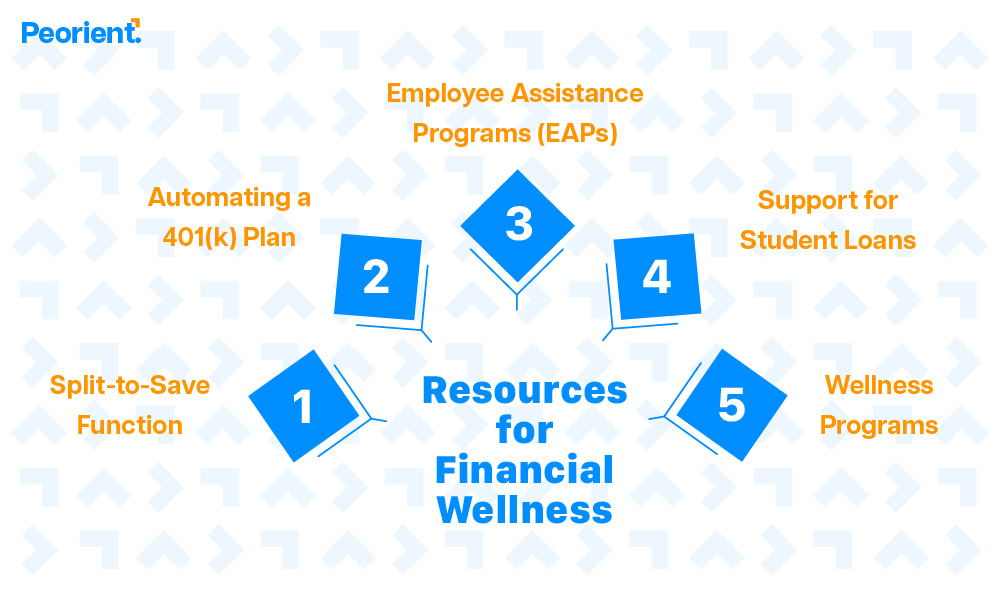
The Benefits and Drawbacks of the Gig Economy
The gig economy has transformed modern employment, offering both opportunities and challenges for workers worldwide.

Financial wellbeing is a major issue for workers given the state of the economy today. Combined with the financial effects of the COVID-19 epidemic and inflation, living expenditures, debt, and healthcare costs on the rise are causing employees unparalleled degrees of financial stress. This paper discusses the value of employee financial wellness programs, their advantages, and how small firms may efficiently apply them to raise employee morale, involvement, and output.
Financial well being, often referred to as financial well-being, is an employee’s general financial situation and their capacity to manage their money stress-free. It entails the absence of money-related pressures including debt and unanticipated spending. Employee morale, engagement, and productivity—which directly influence company performance—are significantly impacted by financial well-being.

Many workers face unanticipated expenses, little savings, and the need for other income sources—all of which add to their financial stress. Lack of financial awareness increases this stress and makes it challenging for staff members to properly handle their money. Financially stressed workers are likely to be less productive and more disengaged, which influences general workplace morale.
Those who have solid finances are more suited to concentrate on their work, participate more actively, and maintain greater rates of productivity. Their diminished likelihood of being sidetracked by money concerns during working hours results in a more harmonious and effective workplace.
A financial wellness program seeks to teach staff members financial management skills and ways to lighten their loads. These initiatives might call for credit resources, online learning, personal financial coaching, and budgeting tools.
Programs for financial wellbeing offer guidance in various financial spheres, enabling workers to better control their money. Common subjects cover:
Programs for employee financial well-being not only help workers but also provide small companies with major benefits.
As workers take time off to tackle financial concerns, financial stress can cause absenteeism to rise. By offering financial support and education, businesses may lower absenteeism, maintaining productivity, and ensuring a consistent staff.
Employees free from money concerns are more focused and effective. Programs for financial health can let workers better handle their money, lowering distractions and improving overall productivity.
A tailored financial well-being program can handle specific financial problems employees face. Businesses may build close relationships with staff members by anonymously polling them and customizing initiatives to fit their requirements, promoting a friendly workplace.

Small organizations can provide more advantages than only employee financial wellness programs to support staff financial health.
Provide a split-to-save option through direct deposit so that staff members may set aside some of their income into a designated savings account, encouraging saving practices.
Add an auto-enrollment tool to a 401(k) plan to expedite enrollment and encourage employee retirement savings.
EAPs boost mental health and enhance overall job performance through services that assist employees in managing financial and other pressures.
Employers can match employee 401(k) contributions with student loan repayments under the SECURE Act 2.0, helping with debt management and retirement savings concurrently.
Establish thorough wellness initiatives aimed at encouraging good practices and preventative health decisions, potentially lowering long-term medical expenses.
A financial well being program’s cost depends on elements such as program customization, company size, and support tools. Companies should investigate alternatives—including outside vendors—to identify a program that meets staff demands and fits their budget.
For businesses looking to enhance their employee benefits, employee financial wellness programs offer a powerful tool to improve employees’ financial health and overall well-being. It has been observed that there are organizations like Remunance that hold monthly webinars to educate their employees on multiple topics, such as financial planning, taxes, mental wellness, etc.
Investing in employee financial wellness is a calculated step for small businesses. By addressing financial challenges and offering tools and knowledge, businesses can improve employee morale, engagement, and productivity, creating a more successful and harmonious workplace.

"Versatile writer adept at creating impactful content to support business objectives."

The gig economy has transformed modern employment, offering both opportunities and challenges for workers worldwide.

Within the next two and a half years, Ford Motor Company wants to introduce an all-electric vehicle that costs $30,000.

Within the next two and a half years, Ford Motor Company wants to introduce an all-electric vehicle that costs $30,000.